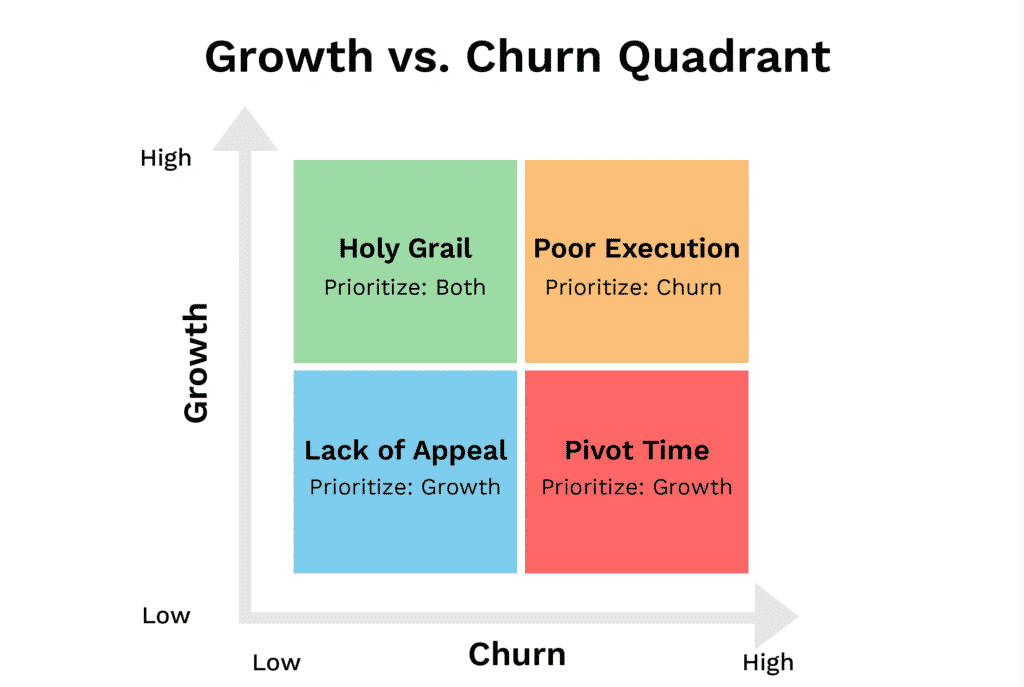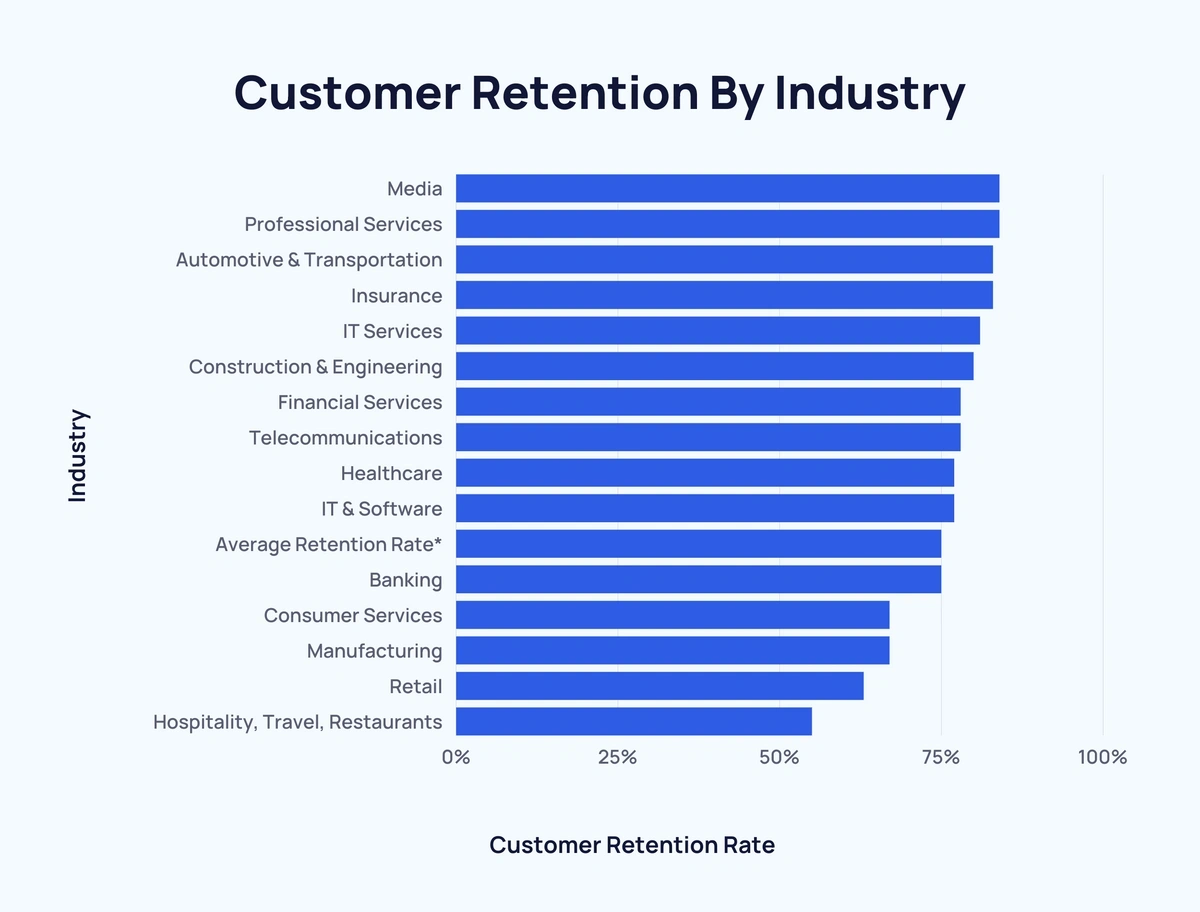Understanding and effectively managing your churn rate is crucial for long-term success.
Your churn rate refers to the rate at which customers discontinue their association with your business, either by canceling a subscription or ceasing to make purchases.
By recognizing the importance of churn rate and implementing strategies to anticipate and reduce it, you’ll be able to better plan and optimize your brand’s growth and retain a loyal customer base.
This post aims to shed light on the concept of churn rate, its calculation, and when it is acceptable for businesses to experience churn.
Churn Rate Definition and Calculation
Churn rate refers to the rate at which customers discontinue their association with a business over a specific period. It is a key metric used to measure customer retention and loyalty.
Once you understand how to calculate your churn rate, you will be able to assess the health of your customer base and identify areas for improvement.
To determine your churn rate, divide the number of customers lost during a given time frame by the total number of customers at the beginning of that period. The result is then multiplied by 100 to express it as a percentage.

For example, if a business starts the month with 500 customers and loses 50 customers by the end of the month, the churn rate would be calculated as follows:
Churn Rate = (Lost Customers / Total Customers at the Start) x 100
In this case, the churn rate would be 10%:
(50 / 500) x 100 = 10%
Calculating churn rate on a regular basis, such as monthly or quarterly, allows businesses to track trends, identify patterns and assess the effectiveness of their customer retention strategies.
It is important to note a couple of things:
- Your churn rate can be measured for different time periods, such as monthly, quarterly or annually, depending on the business’s preference and industry standards.
- Your churn rate can be calculated for different segments of customers or specific products/services, providing further insights into the areas that require attention.
Dive Deeper: 4 Bullet-Proof Ways to Increase Customer Retention (and Increase Sales!)
5 Scenarios When High Churn Is Acceptable
Churn can be associated with a variety of events and circumstances that occur in businesses, especially with SaaS companies, where the nature of their service offering and company model is driven by constant changes and improvements.
Let’s take a look at a few of the leading reasons that contribute to churn – and why that’s okay in these situations.
1) Startups and Early Stages
When a business is in its infancy, high churn is generally expected and acceptable. As it takes time to establish a solid customer base, early-stage ventures often experience higher churn rates.
In fact, if you’re a startup, you should definitely be tracking your churn rate. This key metric tells you how many customers you’re losing every quarter or month. Entrepreneurs should be prepared for this reality and focus on acquiring valuable feedback from departing customers. This feedback serves as a roadmap for improving the product or service and reducing churn over time.
Although every startup business will have a different median churn rate, according to Baremetrics:
“Most early-stage SaaS companies I’ve observed typically have churn around 10-15% for the first year as they work out exactly what their product needs to do, then they’re able to reduce it pretty quickly.”
Related Content: SEO Strategy for Startups: How to Win in 2023
2) Market and Industry Factors
It’s important to consider that churn rates vary across industries. Some industries naturally exhibit higher churn rates than others:
Studying industry benchmarks and standards can help your brand gain insights into the acceptable range of churn rates for your specific sector.
While reducing churn should always be a goal, understanding industry trends allows businesses to set realistic expectations and focus on optimizing other areas of their operations.
Related Content: SaaS CAC: A Guide to Customer Acquisition Costs
3) Strategic Business Shifts
In certain situations, churn becomes a necessary consequence of strategic decisions aimed at business growth or survival.
For instance, businesses expanding into new markets or targeting different customer segments may experience churn among their existing customer base. Additionally, during challenging market conditions that necessitate downsizing, some clients may no longer fit the revised service offering, resulting in churn.
Transparent communication and guiding customers to suitable alternatives can help maintain positive relationships during such transitions.
Related Content: How to Find and Hire a VP of Growth for Your Business
4) Downsizing and Market Challenges
During challenging times when market conditions are tough and a company is confronted with the need to downsize, churn may become an unfortunate reality.
This is a situation observed across various industries, including big tech, where cuts and downsizing efforts are prevalent. While these actions are often kept behind the scenes, they serve as a means for businesses to adjust their operations in response to economic pressures.
In such cases, downsizing may entail switching client services and, consequently, churning out some clients. This means informing them that the company can no longer fulfill their requirements. Although it is regrettable to part ways with valued customers, this necessary measure is taken to align the organization with its new scale and capabilities.
When faced with downsizing, it is crucial to communicate openly and honestly with clients. Assure them that the decision is driven by the need to navigate challenging market conditions and maintain the company’s sustainability. Where appropriate, offer alternative solutions by recommending other providers with the capacity to serve their needs.
Related Content: 5 Ways to Re-Engage Those Long-Lost Customers
5) Business Model Pivot
Another scenario where churn can be considered acceptable is when a company decides to undergo a significant business model pivot:

This entails shifting the core focus or direction of the business, often towards an entirely different market or offering. In such cases, it is natural for some existing customers to become incompatible with the new business model or no longer aligned with the company’s target audience.
Related Content: 6 Ways to Improve Customer Loyalty with AI
Reducing Churn and Optimizing Growth
While some degree of churn may be inevitable, businesses must actively work to minimize it. Here are some key strategies to consider:
- Enhance Onboarding and Customer Support: Investing in comprehensive onboarding sessions and proactive customer support can significantly reduce churn rates. Your brand can foster customer satisfaction and loyalty when you help your customers fully understand how to use the product or service and receive timely assistance when needed.
- Continuously Add Value: To combat churn, businesses should consistently explore opportunities to provide additional value to their customers. This can be achieved through the introduction of new features, expanded services, or product enhancements. By continuously exceeding customer expectations, businesses can strengthen relationships and reduce the likelihood of churn.
- Seek Customer Feedback: Regularly soliciting feedback from customers who churn is a valuable practice. Understanding their reasons for leaving can illuminate areas that require improvement. Armed with this knowledge, businesses can adapt their strategies, refine their offerings, and proactively address customer concerns to minimize future churn.
Related Content: How to Use UX Testing to Improve Your Customer Lifetime Value (CLV)
Last Words on When a Higher Churn Rate Makes Sense
While churn rate may initially seem concerning, it’s important to recognize that certain scenarios warrant its presence.
Startups, industry-specific dynamics, and strategic business shifts can all contribute to acceptable churn rates. However, businesses should strive to optimize their operations and employ strategies to reduce churn over time.
Do not fret. So long as you incorporate and maintain effective onboarding, enhance customer support, continuously add value, and actively seek feedback, you can improve customer retention, increase revenue, and foster long-term growth for your business.
If you’re ready to grow your business, Single Grain’s marketing & growth experts can help!👇
Repurposed from our Marketing School podcast.




